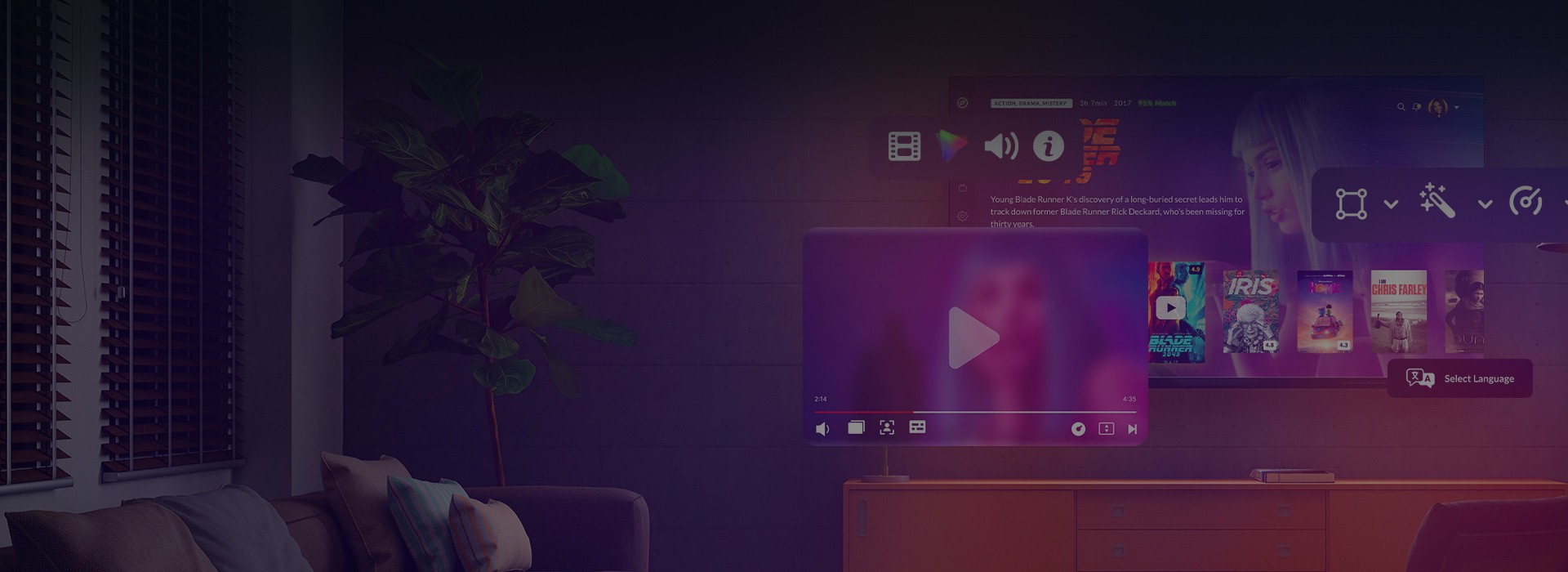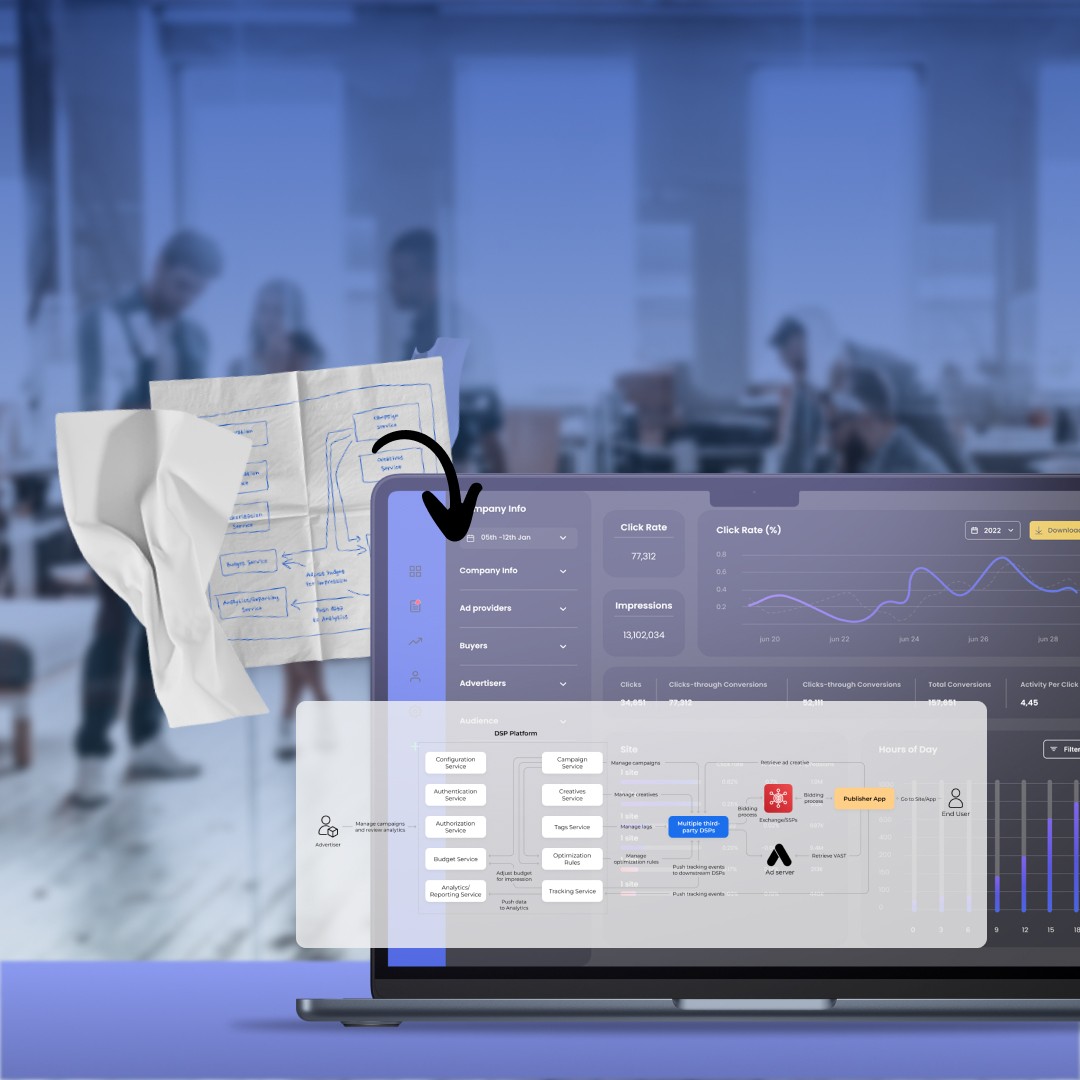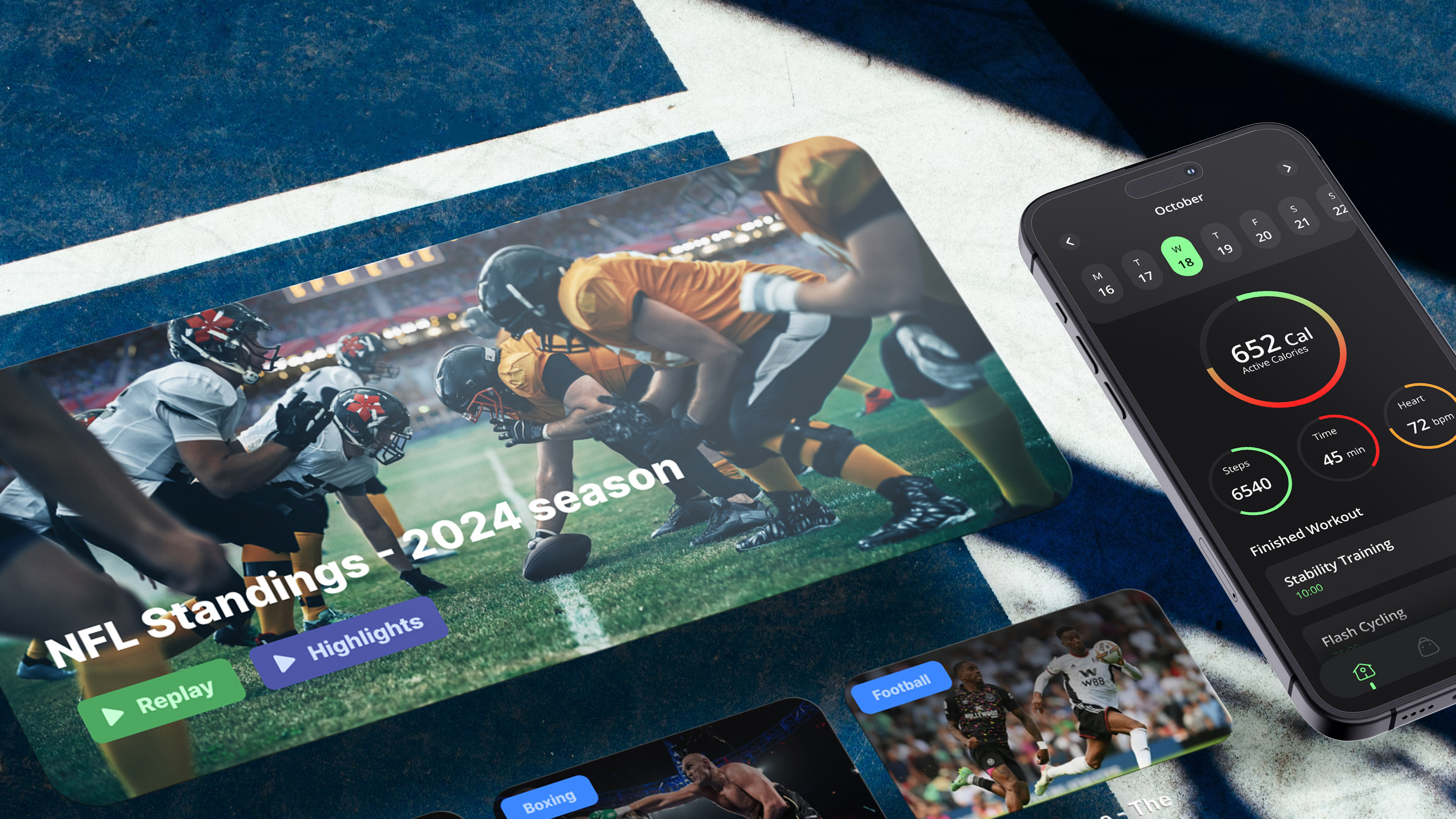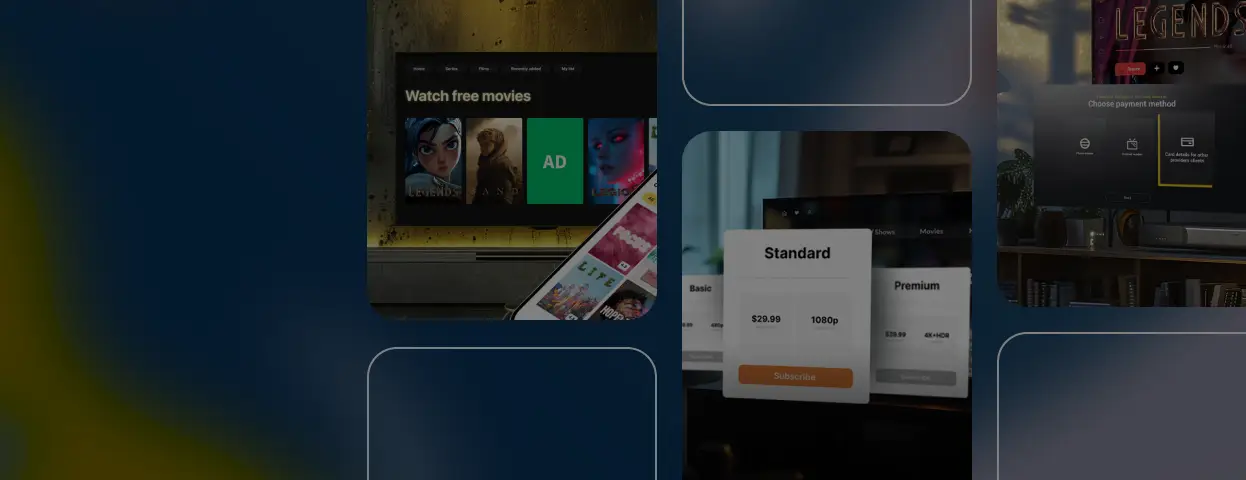Inside this guide
When building a revenue-generating Roku app, you’re not short on options, but choosing the right monetization strategy (or blend of strategies) is where things get interesting.
Some default to subscriptions, while others rely on ads. But the truth is, Roku offers the flexibility to mix and match, and when done right, this combination can deliver both user satisfaction and business results.
In this article, we discuss the most effective ways to monetize Roku channel experiences, from seamless ad delivery to smart subscription structuring, and explain what it really takes to make each model work from both technical and business perspectives.
Ivan Popovic, Senior Roku Developer at Oxagile, shares his first-hand experience with Roku’s monetization mechanics. With years of hands-on practice building and optimizing Roku apps, Ivan knows how to turn platform requirements into flexible monetization strategies and how to align technical implementation with business goals.
How does Roku monetize, and why does it matter to you?
Before we move on to the intricacies of Roku ads and subscriptions, let’s take a moment to zoom out. How does Roku monetize, and what can you learn from it as a content publisher?
How Roku makes money
 Video advertising |  In-app subscriptions & purchases |  Channel promotion |
via Roku Ad Framework (RAF)
Roku earns from ad impressions and shares ad revenue | 20% commission on all user payments
Applies to subscriptions, rentals, pay-per-view | Paid placement in the Roku Channel Store
Gives your app more visibility in search and listings |
Why should you care?
Because understanding how Roku earns gives you a better idea of how your app will be evaluated and which monetization strategies the platform is most likely to support and surface. Aligning your own model with Roku’s priorities is surely strategic.
At Oxagile, we help video-first businesses do exactly that — not only on Roku, but across a wide spectrum of custom video solutions, from CTV platforms to full-fledged OTT ecosystems.
Tech matters. So does who implements it.
Monetizing your Roku app isn’t just about plugging in an ad provider. It’s about making the right technical decisions for your content type, playback model, and user experience, and aligning all of it with Roku’s strict guidelines.
And seasoned Roku developers can make the difference.
Talk to Oxagile’s Roku experts about building an app that supports various monetization scenarios, meets the platform’s requirements and your business goals.
Using ads to make money with a Roku channel
One of the most common and scalable ways to monetize a Roku channel is through advertising. It allows you to provide content free of charge while generating steady revenue through strategically placed ad breaks. Think of it as a win-win: users avoid upfront costs, and publishers tap into the vast potential of connected TV ad markets.
Roku supports multiple ad insertion methods:
- Server-Side Ad Insertion (SSAI) — ads are stitched into the content stream on the backend, creating a seamless experience with minimal buffering.
- Client-Side Ad Insertion (CSAI) — the app requests and plays ads at defined breakpoints; more flexible, but can lead to inconsistent playback quality if not handled properly.
- Roku Ad Framework (RAF) — Roku’s mandatory advertising library handles ad playback, event tracking, and impression reporting.
No matter which provider you use (Google Ads, Adobe, or Roku’s own services), RAF must be integrated to track key ad events like starts and completions. Without it, monetization simply won’t work — your app won’t be compliant, and revenue won’t be counted correctly.
Ad formats and placement options
While Roku supports various ad types, including display banners and overlays, video ads remain the gold standard. These can be served in three primary positions.
Pre-roll ads
Pre-rolls are shown before the main content starts. They’re:
- Technically simple to implement
- Less intrusive to the viewing experience
- Consistently effective in generating revenue
That’s why they’re a common go-to for many Roku developers, especially in apps with short-form or music-based content.
Mid-roll ads
Mid-rolls appear during playback and bring the highest revenue potential over time. But they come with a cost: complexity.
“Mid-rolls are where things get tricky,” Ivan explains. “They need to be inserted logically and not just dropped randomly into the stream. With music or short-form content, that’s almost impossible without hurting the experience. But if you’re dealing with long-form videos, it can work as long as the breaks feel natural.”
Technically, this means that for VOD content, you’ll need to predefine cue points. For live streaming, you must insert ads dynamically, synchronized with the stream. Each approach has its own set of backend rules and Roku constraints.
Post-roll ads
Post-rolls show up after the content ends. While easy to set up, they tend to underperform &mdash’ users often exit the app or switch content before these ads play.
“Many people think monetization setup ends with deployment,” Ivan adds. “But actually, ad reporting and revenue integration are just the beginning. You have to stay compliant with Roku’s policies, track events properly, and make sure you’re receiving the expected revenue shares.”
Ad placement options on Roku
 Pre-roll |  Mid-roll |  Post-roll |
- Easy to implement
- Minimal user disruption
- Steady revenue stream
| - Highest revenue potential
- Requires smart timing
| - Simple setup
- Low user engagement
- Often skipped
|
Subscriptions as a monetization strategy available on Roku
While ads can help you monetize free content, subscriptions unlock a different kind of opportunity: a direct relationship with your audience. With a well-structured subscription model, you’re not just earning revenue but also giving users reasons to stick around.
Roku supports a wide range of paid monetization models, including:
- Monthly and yearly subscriptions — the classic streaming model.
- Rentals — temporary access to a single piece of content for a set price.
- Pay-per-view — one-time fees for specific events, like a concert or sports broadcast.
Most Roku-based apps can (and should) support multiple subscription types at once. And if your app already includes subscriptions, you’re well on your way to expanding further.
“If you implement subscriptions, then you already did 90% of the required things for implementing pay-per-view. We encourage our clients to do that to make the most of their Roku monetization.”
Plan smarter: tiers, pricing, and flexibility
When designing your subscription offerings, there are a few strategic things to consider:
- Roku keeps around 20% of your subscription revenue. The commission is obligatory, so make sure it’s factored into your pricing model.
“Some teams forget this and end up with thinner margins than expected.”
- Subscription plans can be flexible. You’re not limited to “monthly” and “annual” — you can offer tiers based on content quality (e.g., HD vs 4K), access level, or unique app features.
- Roku supports upgrades, downgrades, and promo campaigns out of the box. That gives you room to experiment with packages and optimize for both retention and acquisition.
Managing subscriptions: upgrades, downgrades, and promos
Roku’s subscription framework doesn’t lock you into rigid offerings. On the contrary, it gives publishers the flexibility to let users move between plans, explore premium tiers, or drop back to basics as needed.
Users can:
- Upgrade or downgrade between tiers at any point in the billing cycle
- Redeem promotional offers to trial paid features or unlock limited-time access
- Manage subscriptions directly through Roku’s native interface
These built-in options make your app more attractive, especially for users still on the fence. They also open the door for smarter pricing experiments and seasonal campaigns.
“It’s not just about the subscription itself,” Ivan notes. “It’s how flexibly you let users move within your pricing structure that makes the whole system feel fair and keeps people engaged.”
Is feature-based monetization a smarter subscription model?
One of Ivan’s go-to strategies is grouping subscription plans by features, not just by stream quality or time-based access. This strategy works especially well for feature-rich apps that offer more than just passive content consumption. For example, you might group users like this:
- Free tier: Access to a limited content library with pre-roll ads and no login required
- Basic tier: Ad-free access, plus essentials like Continue Watching, My List, and content bookmarking
- Premium tier: Everything in Basic, plus multi-device sync, custom playlists, or even early access to new content
“You don’t have to tie every tier to video quality like HD vs 4K,“ Ivan notes. “Functionality is more tangible for users — they feel the value in real-time, which makes them more likely to upgrade.”
If you’re building an app for niche audiences like music fans, learners, or sports communities, this model gives you the flexibility to gate features based on what users truly care about.
Choosing the right Roku app model for your monetization strategy
Roku offers several development models:
- SDK-based apps, which gives you full customization, feature control, and ad/subscription integration
- Hybrid approaches, where you start simple and gradually evolve
Each option comes with trade-offs. SDK-based apps for example allow for richer features, deeper analytics, and monetization strategies tailored to your business logic. For some teams, a hybrid approach means starting with a lean SDK implementation focused on core features and expanding functionality step by step as audience demand and business goals evolve.
Whether you plan to monetize through ads, subscriptions, or both — the technical path you choose will shape your app’s flexibility and future growth.
If you’re still evaluating which app best fits your needs, check out our Roku TV platform comparison. It walks you through real-world pros, cons, and use cases for every option.
Case in point: Custom Roku app for a leading music streaming platform
To help a top-tier music streaming service expand its reach to connected TV audiences, Oxagile built a custom Roku app that merged accessibility with efficient monetization. The goal was to enable quick entry for casual viewers while still generating revenue from day one — no sign-ups, no barriers.
- Anonymous users could stream select music videos and performances for free
- Pre-roll video ads monetized traffic without disrupting the listening flow
- Subscription plans unlocked full access, including ad-free playback and curated playlists
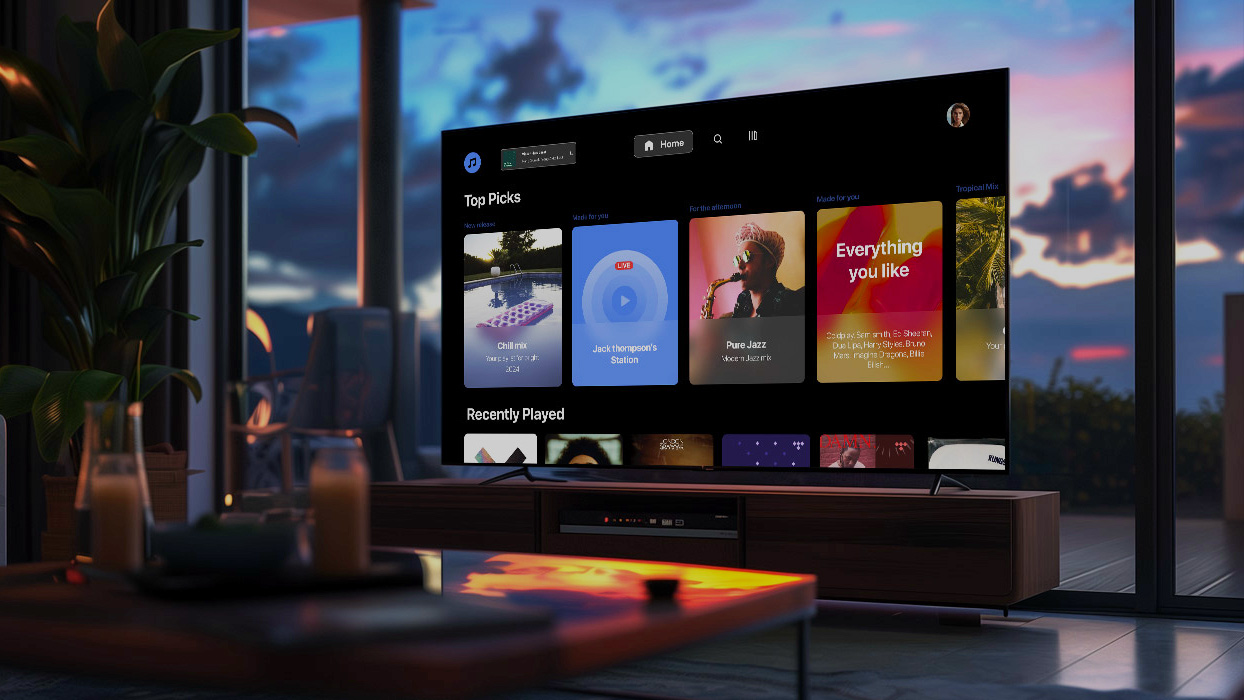
This hybrid approach allowed the client to grow their user base while maintaining sustainable monetization, all wrapped in a smooth, user-friendly CTV experience.
Build Roku monetization that matches your vision and user expectations
There’s no one-size-fits-all approach to monetizing a Roku channel. The platform gives you freedom, but that freedom comes with choices. Ads or subscriptions? Pre-roll or mid-roll? Monthly plans or feature-based tiers?
The most successful publishers don’t simply pick one model — they build a monetization ecosystem that reflects their content, their users, and their long-term goals.
Success formula for Roku monetization
 Strategic clarity |  Meaningful value for viewers |  Solid technical execution |
- Choose the best-fit revenue model
- Understand Roku’s monetization logic
| - Offer flexible plans or seamless ads
- Align content access with user needs
| - Integrate RAF and track ad events
- Ensure scalable, compliant app behavior
|
Some key takeaways to keep in mind:
- Ads work best when they’re integrated cleanly, not bolted on. Timing matters. Format matters. User context matters.
- Subscriptions thrive when you offer real value: not just access, but control, continuity, and convenience.
- Technical implementation isn’t just about code. It’s about making business logic executable within the rules of Roku’s ecosystem.
“In the end, monetization isn’t about pushing a revenue lever,” Ivan says. “It’s about creating an experience that people want to engage with — and are willing to pay for, either with attention or money.”
If you’re serious about building a Roku app that does more than just stream, if you want it to perform, evolve, and generate revenue sustainably, you need a team that understands both sides of the equation: technology and business.
At Oxagile, we help content providers and product owners launch Roku experiences that don’t just work — they grow.
Let’s talk about your Roku monetization roadmap.

